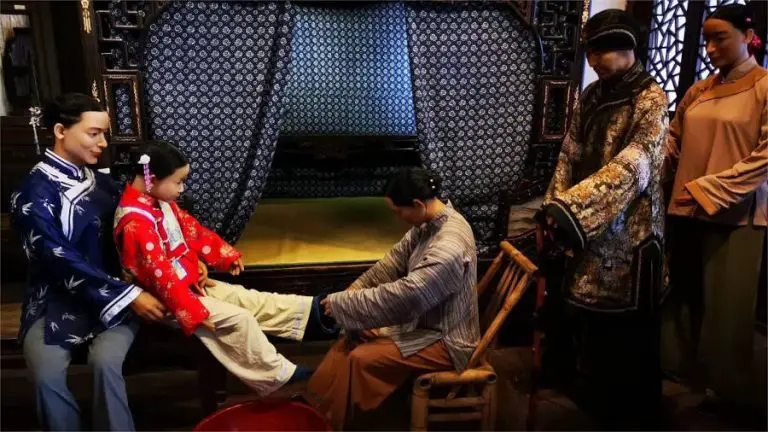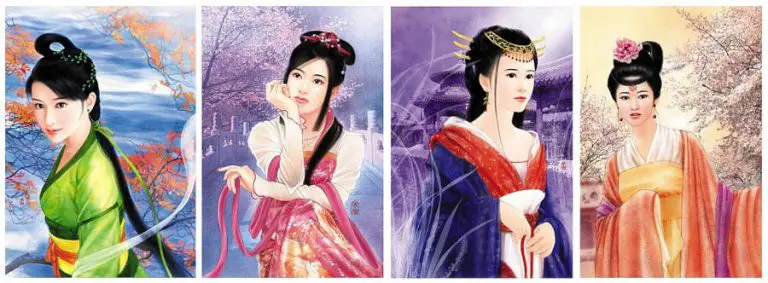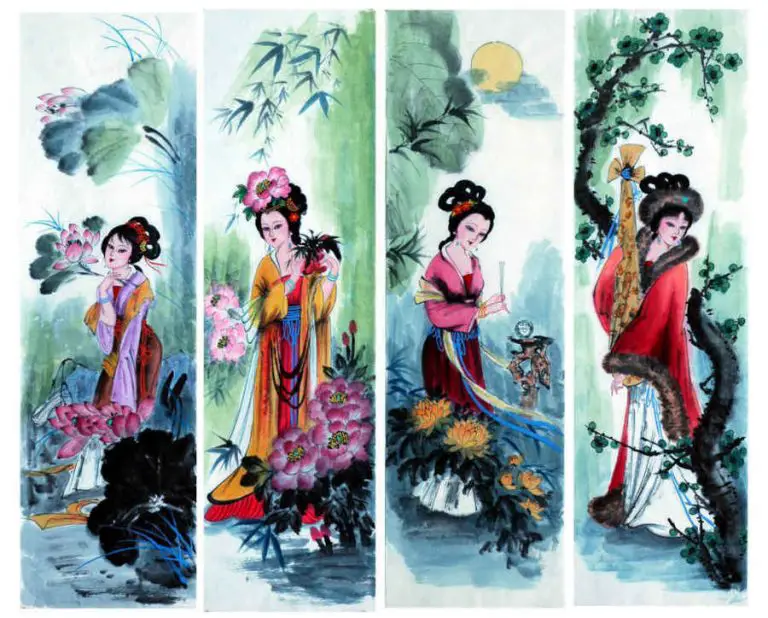Three deities known as “Sanxing” are the Chinese god of luck. When these three luck deities are displayed in your house or business, they offer wealth, prosperity, and longevity luck.
“Sanxing” is a combination of San (three) and Xing (stars). The three members of the trinity are the God or “Star” of wealth or blessings (fuxing 福星), the God of prosperity (luxing 祿星), and the God of longevity (shouxing 壽星). They are shown as a trinity in a single artwork or drawing or as three individual figures.
Each of the three gods (Sanxing) is in charge of a certain luck that Chinese astrology employs to determine a person’s fate in life.
Fu represents good fortune and harmony; Lu represents authority, power, and wealth; and Shou represents excellent health and longevity.
The Origin of the Three Gods: Fu, Lu, and Shou
The religious movement of master Zhang Daoling, who lived during the late Han period (206 BCE–220 CE), is where the idea of three gods called “Celestial Functionaries” (sanguan 三官) came from. Heaven, Earth, and water were all administered by the three celestial ministers. The Minister of Heaven (tianguan 天官) was thought to give prosperity; the Minister of Earth (diguan 地官) was thought to bring amnesty from punishment; and the Minister of Water (shuiguan 水官) was thought to deliver help in difficult circumstances.
These three deities subsequently evolved into the “three stars” or “Sanxing,” which symbolize fortune, wealth, and longevity.
These three gods (or stars) were initially depicted as old wise men during the Ming dynasty. In Chinese society, the term often serves to describe the three things that make a good life.
Don’t be confused; they can frequently be referred to in a variety of ways.
- The three stars
- Three gods of luck
- Fuk, Luk, Sau
- Fu, Lu, Shu
- Three wealth gods
- Three wise gods
- The lucky immortals
A good life is characterized by fortune, wealth, and longevity. Throughout Asia, the figurines are frequently preserved in people’s homes, with little offerings placed in front of them. Almost always, you can find them in shrines and temples.
Additionally, they are traditionally arranged from right to left, just as Chinese characters are written from right to left. Fu is on the far right, Lu is in the middle, and Shou is on the far left.
Regarding their origins, each of the three deities has a unique and intriguing story. Here are some of the most well-known.
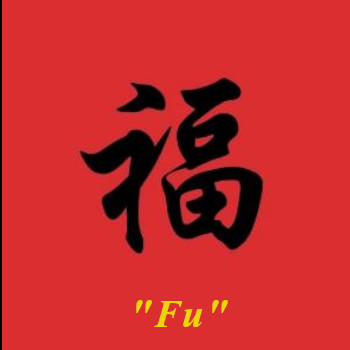
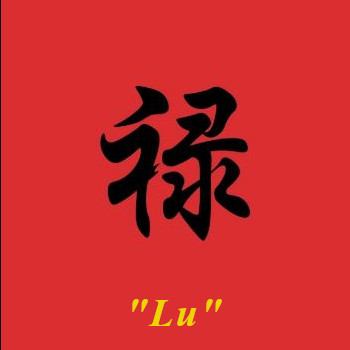
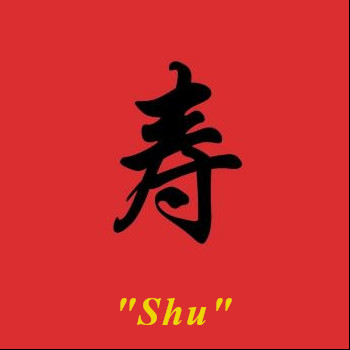
The Legend of Fu- The God of Blessings
The legend narrates the story of Xang Cheng, a government official who served as governor of Daozhou Prefecture (道州) during the Tang Dynasty (618–907) and went by the names Yang Gong 楊公 or Yang Cheng 楊成.
He lived in a village with midgets or small people. At that time, the emperor found midgets entertaining, and he ordered them to be brought to his palace annually for his amusement. These peasants were not permitted to return home.
When Xang Cheng heard that the midgets were unhappy, he did something very brave and almost impossible. With great faith, he wrote a letter that persuaded him to stop taking the little people from their homes. The emperor realized Yang’s point of view and ordered that all midgets be returned to the prefecture to live with their loved ones.
Another story involves a businessman named Zhang, who provided meals to those in need. The god of wealth and the deity of good news, upon hearing this, made the decision to come to see him and bestow their blessings. Surprisingly, Zhang declined to open the door for them. The god of happiness then arrived, and Zhang cheerfully opened the doors for the gods. He reasoned that without happiness, wealth, and good news would be nothing.
Xang Cheng was eventually immortalized as Fu Xing. The star god of happiness, wealth, and good fortune.
In actuality, the Fu star refers to Jupiter (suixing 歲星 ). It is worth noting that the worship of the deity of wealth was initially intended for this star. However, through time, it eventually developed into a human image that might bring people good fortune. It stands for the five good things that can happen to a family: long life, wealth, status, peace and happiness, and many children.
Identifying Fu
The God of Blessings is usually shown in scholar’s attire, carrying a scroll on which the character “Fu” is sometimes inscribed. He might also appear holding a child in his arms or surrounded by kids. The scroll represents education and knowledge. The child is a sign of good fortune passed down from generation to generation. He has a lengthy beard and a bright, joyful face.
A mountain of gold and silver is sometimes represented over his head, along with the character for “fortune” (fu 福 ). Because of a wordplay between the Chinese words for “prosperity” (fú 福) and “bat” (fú 蝠), the God of Wealth is occasionally accompanied by a bat.

The Legend of Lu – The God of Prosperity and Status
The God of Status and Prosperity is connected with Immortal Zhang (張仙), who was most likely the same person as Zhang Xian (張仙), who lived in Sichuan during the Five Dynasties period (五代 907-960), resided on Mt. Qingcheng, and cultivated the Dao.
The most well-known Zhang tale involves an emperor of Shu, Meng Chang, and his concubine, Huarui. According to legend, Meng drew an image of himself as an archer and gave it to Lady Huarui. When the Song dynasty later took over his country, he surrendered and saved his life. Nonetheless, he died a week later for no apparent cause.
Huarui was thereafter taken under the care of Song’s ruler as his personal concubine. Huarui put Meng’s portrait on the wall because she still loved him. When the emperor questioned her about it, she said it was the image of a fertility deity named Zhang Xian who would give them sons. He was overjoyed to hear this and began to worship the deity in the hopes of having sons.
Time passed with no evidence of Huarui being pregnant. He then had a dream in which Zhang explained why he has yet to have children. When the emperor awoke, he ordered the creation of additional Zhang paintings, and the people immediately started to worship him.
According to legend, Lu Xing corresponds to the constellation of the six stars of the Wenchang Palace (文昌宮宫), which houses the god who oversees access to governmental offices.
The word lu 祿 literally means “register,” referring to the list of government officials who would be paid. In this sense, the term lu refers to the social position of a government official rather than the amount of money he receives.
Lu Xing gained popularity among ordinary people and intellectuals during the development of the Imperial Examination, a Chinese civil service recruiting technique and education system. It was exceptionally difficult for regular people to become court officials during this time period; therefore, Lu Xing became a deity to whom most examinees would pray for blessing.
Related reading: Guanyin: The Goddess Who Listens to the Cries of the World – Opens in new tab
Identifying Lu
In popular art, the God of Prosperity is shown wearing the robes of a ministerial vice director and with a peony bloom on his head, which represents prosperity. He normally wears a hat with two distinct flaps on both sides.
His personal symbols are the Ru Yi scepter and a gold bar. You could come across some sculptures of him holding both. The gold bar is an evident sign of success through income, stable work, or any other source of money, and the Ru Yi scepter is a traditional feng shui career remedy.
Sometimes carries a baby or holds a small child’s hand. The image of the God of Status is sometimes accompanied by a deer, or the painting is engraved with the word for deer, which is a wordplay as “deer” (lù 鹿) and “status” (lù 祿) are pronounced the same way.
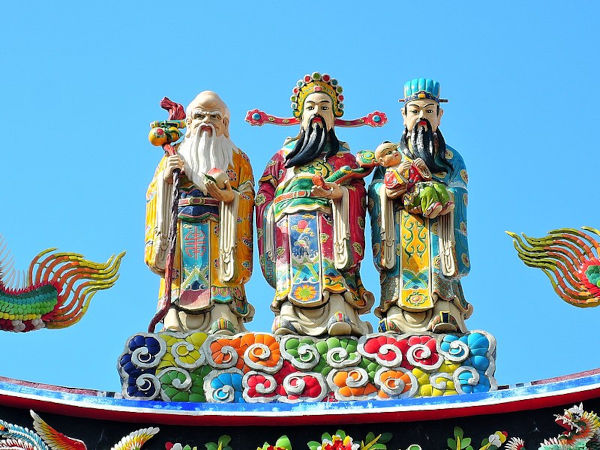
The Legend of Shou – The God of Longevity
The God of Longevity is shown as an elderly man, and so is also known as:
- “Old Guy Longevity Star” (Shouxing lao’er 壽星老兒 )
- “Old Immortal of the South Pole” (Nanji xianweng 南極仙翁)
- “Old Man from the Southpole” (Nanji laoren 南極老人 )
The tale of Shou goes as follows. A young couple was enjoying the south pole star in the night sky when it suddenly vanished. The lady subsequently discovered she was pregnant and speculated that it had something to do with her experience observing the night sky. Then, in a dream, the unborn child told her that he would only be born 10 years later. She began to believe that dream after the baby did not arrive in this world after 10 months.
Because she was pregnant for such a long time, she began to seek explanations in her dreams. Then she discovered that the baby will be delivered when the stone lion’s eyes turned red. Later, when she began to understand, she painted the stone lion’s eyes with pig’s blood. Shou Xing was eventually born. However, because he did not go through the entire incubation period of ten years, he was born permanently bald. This was the cause of his distinctive baldness and peculiar forehead shape.
His old look was explained by the fact that he traveled into the mountains to meditate. Then, several decades later, he reappeared with a walking staff, a gourd, and the peach of longevity. By this point, all of his earthly friends had died, and the only people he encountered were the great great grandchildren of others in his age group. This is why he looked so old. He’d turned into an immortal deity.
There is also a renowned story about a young boy named Yan Chao who was predicted to have a short life by a prominent fortune teller named Guan Lu from the State of Wei. Yan was then told to bring food and drink into the forest to serve two elderly men who were playing chess. The two wise men were revealed to be the north pole’s and south pole’s star gods. In return, San Xing extended Yan’s lifespan to 90 years, the age at which Yan died.
The god of Shou has the ability to determine when each individual would die. He determines how long each individual will live in advance. As a result, people pray to him for a long life.
The god is represented by the heavenly constellations jue 角 and kang 亢. It was thought that if this constellation was visible, the earth would be at peace. Because of this, offerings have been made to this star deity from ancient times, both at the palace and among ordinary people.
Related reading: Caishen – The Chinese God of Wealth and His Role in Chinese Culture and Feng Shui– Opens in new tab
Identifying Shou
The God of Longevity is shown as an elderly guy with a towering head, long ears, and a long beard, but with the face of a youthful man. He bears a staff made of peach wood and holds the peach of immortality.
His peach is supposed to originate from the Holy Peach Garden of the goddess Xi Wangmu (Queen Mother of the West and wife of the Jade Emperor). Some statues show Shou holding a Wu Lou, the health-giving gourd filled with the Elixir of Life. He frequently rides a deer, occasionally a crane, and is accompanied by a little boy with a peach.
Shou Xing is the most well-known of the three stars, and he frequently stands alone.

Feng Shui and the Three Stars Gods “Sanxing”
The “Three Stars Gods” or “Three Immortals” are a traditional feng shui cure used to improve health, wealth, and success in one’s life.
They can be referred to as Fu Xing, Lu Xing, and Shou Xing separately, with “Xing” meaning “star.” Though they are rarely worshiped, their presence is thought to bring good luck, therefore they may be found in the majority of Chinese houses. Each deity carries a symbolic object, and the three deities are always seen together.
It is said that facing the dining table will offer an abundance of benefits, whilst facing the office will provide authority, prosperity, fame, and abundance.
Placement of Three Stars Gods “Sanxing”
The three immortals can be used to provide fortune, prosperity, and longevity. You can select from a number of key positions. Don’t overdo with more than one set of gods because you don’t want to seem greedy to the gods.
Although Fu, Lu, and Shou are not gods to whom prayers are offered, they are nonetheless highly regarded and employed respectfully in feng shui applications.
The three figures of Fu, Lu, and Shou are always put next to each other, never apart, and in a certain order. All three gods must face forward. Traditionally, they are positioned from right to left, with Fu to the viewer’s right, Lu in the middle, and Shou on the far left.
Since the 3 stars (sanxing) are gods, they should be placed according to the usual rules for worship figures.
- This indicates that you should not confront them directly.
- Wherever you set them, there should be a backing for support.
- Since they’re gods, they operate better on a high shelf at least 3 feet above the ground.
- They should be in a prominent, high-energy spot to promote unity and good fortune to everybody.
- Businesses should display Fu Lu Shou in areas where customers interact, such as a reception desk or a manager’s office.
- If they are set on altars, they should be facing the main door or out into the heavens via the windows.
- They should not be exposed to bad or harmful energy (sha chi).
There is no particular area of a house where the trinity should be placed because it covers luck for every aspect of life.
🍀 Our “Feng Shui Master” app is your trusted companion, offering a useful guide to implementing Feng Shui principles. Try it now!
Here are some locations that can offer the best
East Sector
The East represents your health luck sector. This is a great spot for Fu, Lu, and Shou in your house or business. The three immortals should always be facing in, never out.
Northwest Sector
Your mentor’s luck sector is in the northwest. The three immortals are frequently positioned in this area to help you with your profession and life. If you’re experiencing problems growing in your job, “Sanxing” can help you connect with a beneficial mentor.
Dining Room
Figurines of the three-star gods watching over the dinner table can help bring fortune and harmony to the family. They can be displayed on a sideboard or china cabinet. If you use a painting, hang it on the east wall for good health. The three immortals should face the dinner table in order to bestow their blessings on the meal and your family.
The Living Room
If you decide to put the “Sanxing” gods in your living room, there should be a solid wall behind them. Place them on a table with at least three feet of distance between the tabletop and the floor. This height demonstrates respect for the deities. You can use a shelf for a display if it is at least three feet from the ground and has a solid wall behind it.
Office
They are most effective in the office when put behind the chair, against the wall. The deities should be placed high enough so that they can keep an eye on you at all times. This is to ensure that you have their support while carrying out your duties.
If you can’t put the three immortals behind your desk, put them in the northwest corner, facing your desk.
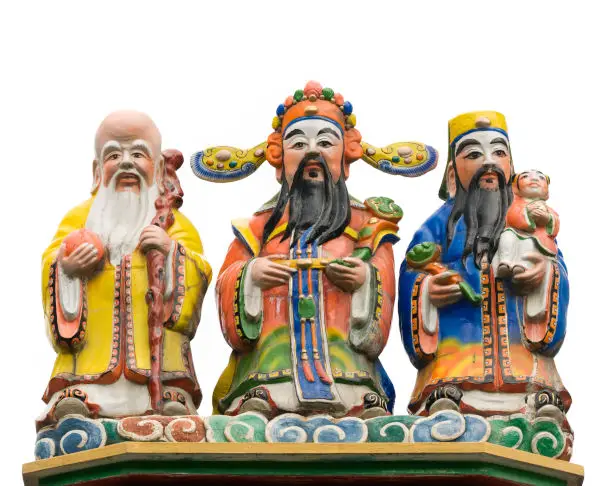
Additionally, they are frequently utilized as stand-alone display objects.
Fu, for example, is the deity of joy. He is frequently shown in paintings or sculptures with symbols of happiness such as calligraphy or the mystic knot. He would surely be best placed in the house’s relationship sector.
Lu is the deity of prosperity, hence he is associated with wealth. For this reason, drawings of this god frequently include gold ingots. His ideal location would be in the sector of wealth.
As the deity of longevity, Shou is all about having excellent health and living a long life. It’s no wonder that he’s frequently accompanied by symbols of longevity like pine trees and cranes. The placement would definitely be best in the health corner.
What to Avoid When Displaying Stars Gods (Fu, Lu, and Shou)
- When putting Star Gods, you should use the same feng shui principles as when placing other deities.
- Never put the three immortals facing out of a room; always put them facing in.
- Never place the three immortals against a door or window.
- The three immortals should never be kept in the kitchen, bathroom, or bedroom.
- Never, ever put Fu, Lu, or Shou on the floor.
- Never position Fu, Lu, or Shou so that they are facing a bathroom, a bedroom, or a kitchen.
Want to learn more about Feng Shui? Take a look at these Courses and Books – Aff.link
End Words
The “Sanxing” trinity of gods, which consists of the deity of Wealth Blessings (Fu), the God of Prosperity (Lu), and the God of Longevity (Shou), is the representation of the Chinese deity of luck. When these three gods are shown in homes or workplaces, good fortune, wealth, and longevity are bestowed. Each god is linked to a certain type of good fortune, such as prosperity and harmony (Fu), power and money (Lu), and good health and long life (Shou).
The three gods have existed since the late Han dynasty, and since the Ming dynasty, they have been represented as humans. They are frequently maintained in houses, shrines, and temples since they are so highly respected in Chinese culture. Feng shui practitioners utilize the Three Star Gods as cures to address money, health, and prosperity issues.
Fu, Lu, and Shou should be positioned in a prominent, high-energy area when they are all together, and they should be put in a certain order. In general, the Three Stars Gods represent the qualities of a happy life and are thought to bestow luck and blessings on people who display them.
Related reading: From Celestial Strategist to Guardian of Sexuality: The Evolving Legend of Jiutian Xuannu – Opens in new tab
Stay in Touch
 Join our newsletter by using the forms on this website or click here!
Join our newsletter by using the forms on this website or click here! Follow us on Google News
Follow us on Google News Follow us on Facebook
Follow us on Facebook
Feature Image from Depositphotos


